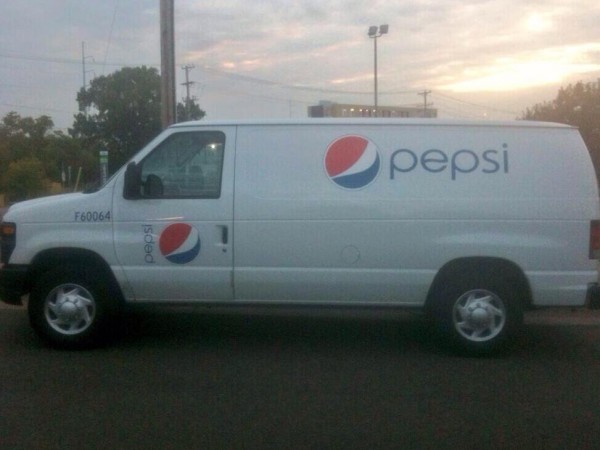Small Works
Keywords: beebee880, Brian, Matthew Simmons, Memes, social, twitter, vine, YouTube
Matthew Simmons writes about the open heart of a user known as Beebee.
Small Works
Matthew Simmons writes about the open heart of a user known as Beebee.
You can do big work on the internet. You can try to teach people things—you can post on a blog or a video about a large and important topic and you can hope that you reach people. You can create an experience on the internet. You can make art. You can make people angry. You can ask everyone to rally around a cause: save children, save animals, save themselves.
You can also do small work on the internet. You can record yourself saying hello. You can tweet about your commute. You can like a Facebook status update or a picture of a cat on Instagram.
The internet is full of noise. It’s a sustained drone of voices. The big work fights hard to yell over the drone—it maximizes and optimizes so that it can be found. It learns which buttons to push on people to get them to pay attention. One sits and strategizes their way to find more eyes on the internet. One plots to keep those eyes on her or himself for as long as possible. People write books on the subject. Companies hire consultants. Everyone tries. Most people fail. The doers of the big work work like hell.
Mostly, the small work doesn’t stand a chance. Mostly.
On the internet, you might come across Brian. On Twitter, he’s @beebee880. On Youtube, he’s beebee890. On Instagram, he’s BEEBEE890. On Vine, he’s Brian.
(Note the switch from 880 to 890. I regret that I cannot tell you why the switch happened. Checking “beebee890” on Twitter, one finds only a suspended account. Did Brian once have that account, get it suspended, and then return by subtracting 10? When he set up his Twitter account, did he mistype it? Maybe someday I’ll tweet at him and ask.)
He has about 12,200 or so followers on Twitter, but in defiance of high followers-to-following ratio of many noteworthy Twitter users, he follows over 13,000.
@beebee880 lookin good, brian 🙂
— good cop XL (@Rad_Mouse) January 13, 2014
He has 7,300 or so followers on YouTube, and his video archive goes back to 2007. (The first video mentions more videos that have been accidentally erased.)
In many of his YouTube videos, he crushes soda and tea cans above his head ceremoniously, dedicating each to a notable person.
He has 2400 or so followers on Instagram, and likes to take photos of food, buses, and himself.
Brian has neurofibromatosis, a genetic disorder of the nervous system. He has a prominent bump on his forehead called a neuroma. It’s a tumor of nerve tissue. He has brief blackouts, and takes buses because of them. He talks openly and honestly about his disability. In small ways:
Brian films himself opening a can of soda with his right hand. His left is nearby shaking.
Brian films his mom sweeping the kitchen floor for him. He suggests that he could try it to show viewers his disability.
And his small work gets heard like a shout over the din.
from @beebee880
Brian is good-humored and odd and expressive. This unassuming, natural charisma, combined with his generous responsiveness, has contributed to his amplification. And though some of the people who interact with Brian, or use his many social media accounts to observe him, do so to mock him, it is just as clear that his own generosity has created around him a little pocket of mutual kindness. Which, it must be said, is sort of remarkable in the cesspool of anonymous carping, insult, and cruelty that the internet can be. He renders the negative responses invisible by occasionally acknowledging them dismissively, and by simply continuing to be him.
Brian is a hub of kindness.
One of the best ways to observe this in action is to follow him on Vine.
It’s as if Vine was made for Brian. A perusal of his YouTube archive reveals that his impulse to record a message to the world often stopped in under a minute. His shortest videos are as brief as seven seconds. So the six-second constraint of a Vine video is just about right for him.
Brian has 16,000 Vine followers, but follows 30,000.
Brian has two kinds of Vines: He says hello to the world or he does something to amuse himself and asks others to do it, also. Often he puts something on his head.
His script for the videos is often the same:
“Hello Vine/everybody. I have a [object] on my head/in my glasses. Please ReVine and do the same. Okay? Bye.”
Or:
“Hello Vine/Everybody. I’m going to bed. Okay? Bye.”
He will sometimes add the time. He will wish people good night. He will ask for a follow. And then: Okay? Bye.
The Okay is often drawn out at the vowels. The Bye is quick and matter-of-fact. Brian’s voice has a little croak, a little vocal fry.
He is a prolific reviner. And more often than not the vines he revines are imitations of his own vines. Most appear to be teenagers, but none seem to be mocking or mean-spirited. They are getting in on the game. They are infected by the singularity of him. And the copies beget copies. They speak to Brian, and Brian sees them. And he revines them—multiples of copies.
Scrolling through Brian’s Vine feed is like watching the conveyor belt at the exit of an industrial stamping machine, as it embosses patterns or logos on a long sheet of metal. It’s an endless parade of “Oooookay? Bye”s. Brian is the pattern. His revined content is the Brians he has stamped on follower after follower.
“Hello, Brian. I have an inflatable guitar on my head. Please revine and do the same. Ooooookay? Bye.”
“Hello, Brian. It’s 10:30pm and we’re going to bed. Oooooookay? Bye.”
“Hello Brian, we made a cookie for you. Oooooookay? Bye.”
The vines are at home or on buses. They are at fast-food joints. They are alone or with a small group of friends. They tag him or put his name in a hashtag to get his attention. And if he sees the Vine and approves, he revines it to his followers. Around and around it goes.
It’s disarmingly sweet—a rare and important thing in a tense, all-too-serious world. In a world of sophisticated attempts to co-opt memes for personal aggrandizement or monetary gain, Vine Brian simply is a meme, a style of behavior capable of spreading from person to person. He’s not selling Brian. He just is Brian. You can be Brian, too. Okay? Bye.
This is how I connected to Brian: Through the poet Patricia Lockwood, I discovered a loose affiliation of surrealist jokesters that is sometimes called—much to the chagrin of the affiliated—Weird Twitter. And around that time, they lost a notable voice. Jackson Lusk, whose Twitter handle was @tree_bro, had resigned from the site a bit earlier. But he still had friends there, and when he passed away they shared the news.
And in the sharing of news and retweeting of sentiments about the news, there was @beebee880 and a link to a YouTube video by user beebee890 of a genial, round-faced young man with glasses and a prominent bump on his forehead, sharing the news of the passing of @tree_bro, mentioning that he had appreciated how @tree_bro had stuck up for him when someone had said something cruel to him. “You told that one person off for me. I remember that. I don’t know if they got the message, but I did,” Brian said.
In his honor, Brian crushed a Pepsi can, which he held over his head in a formal and solemn way. A simple, small thing, direct and emotional. It was Brian doing the small work. It was so loud you couldn’t miss it.





























